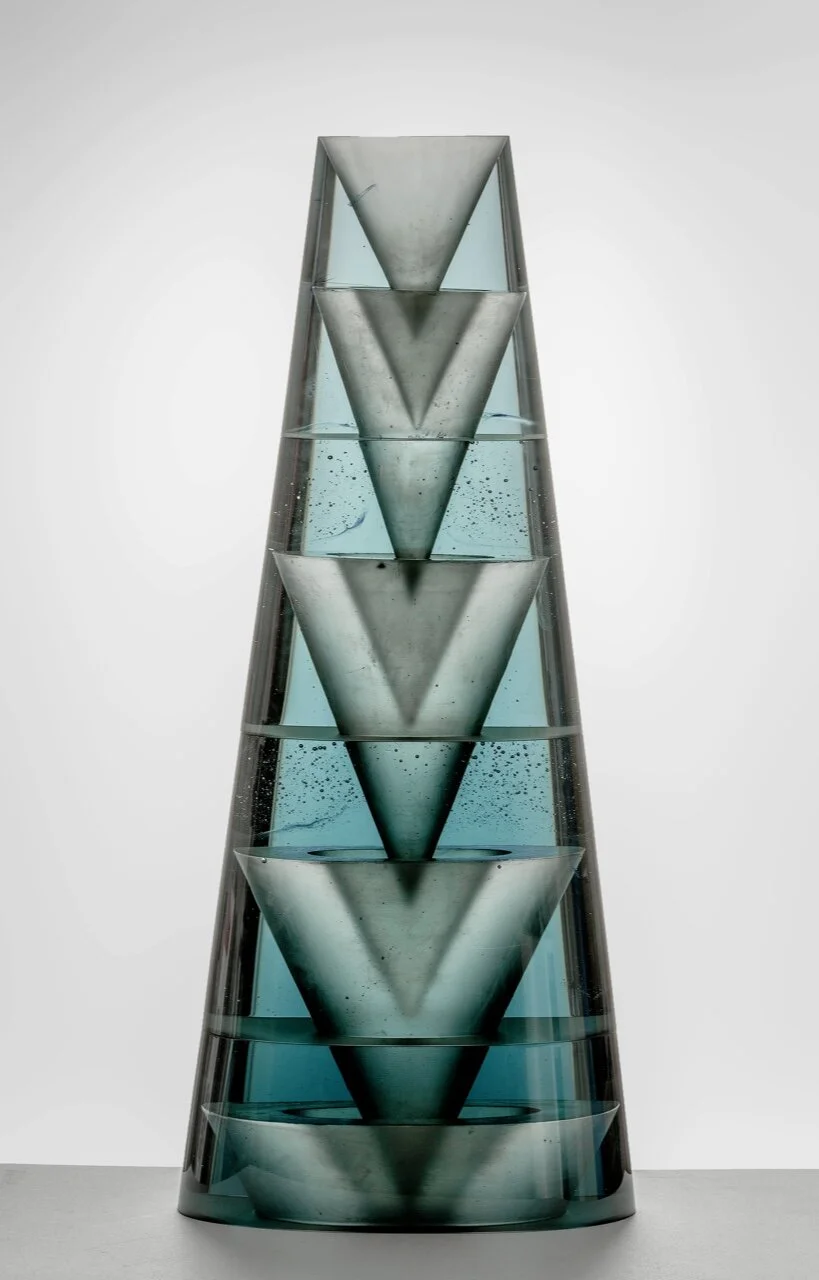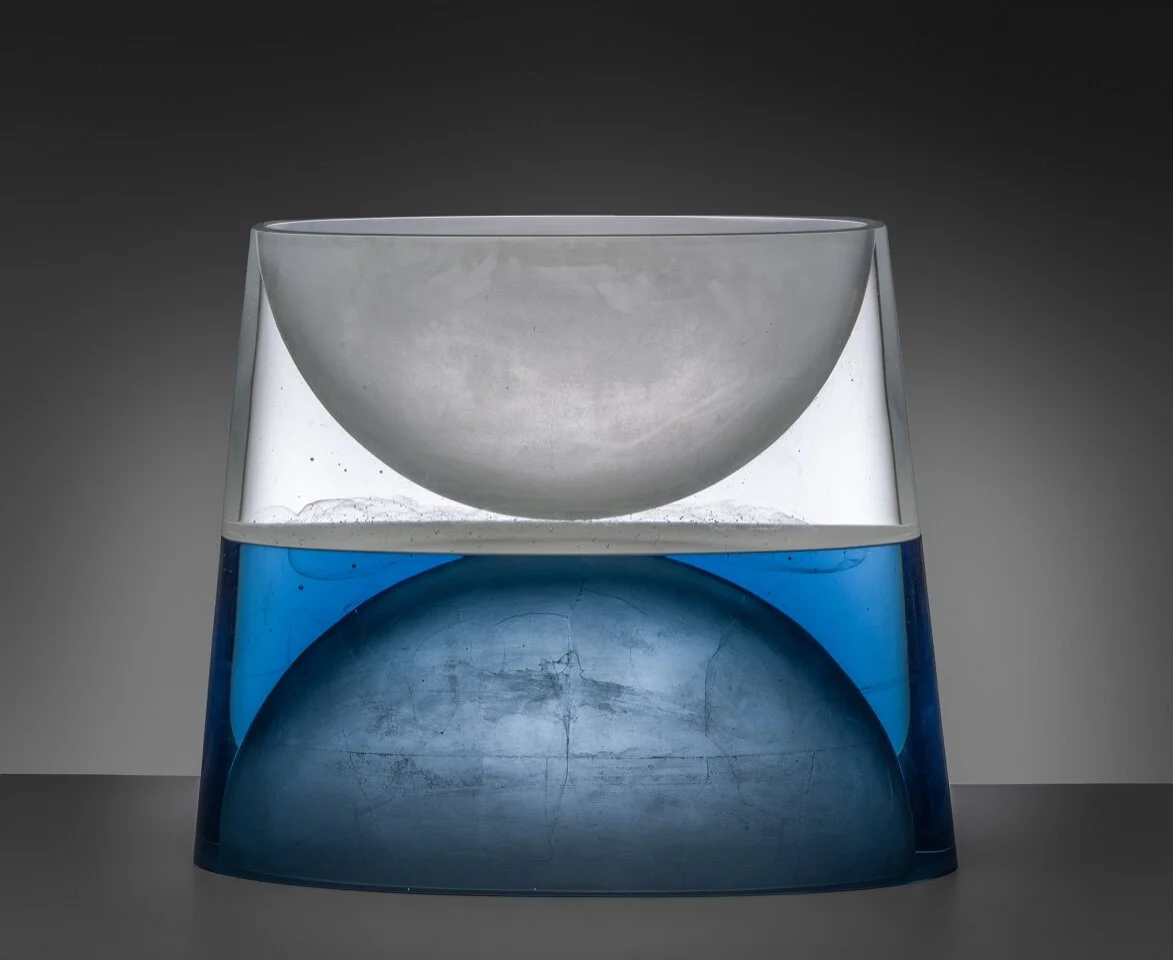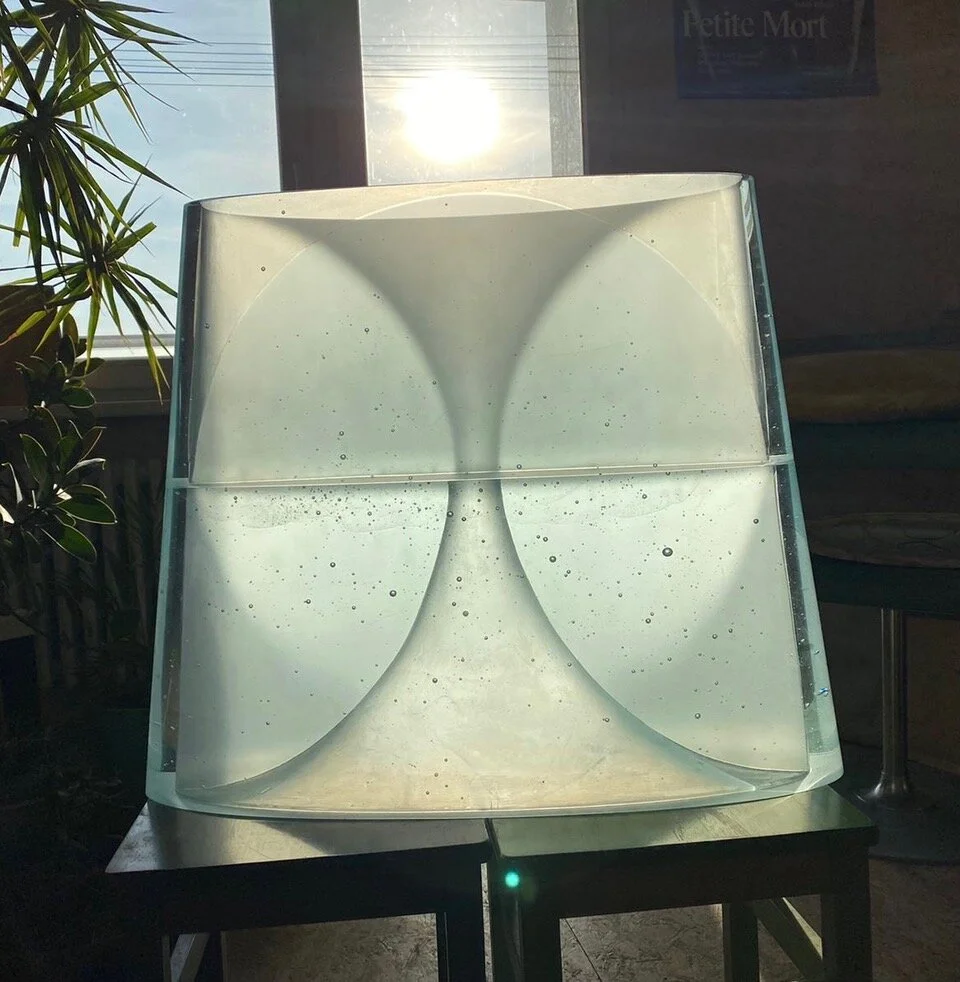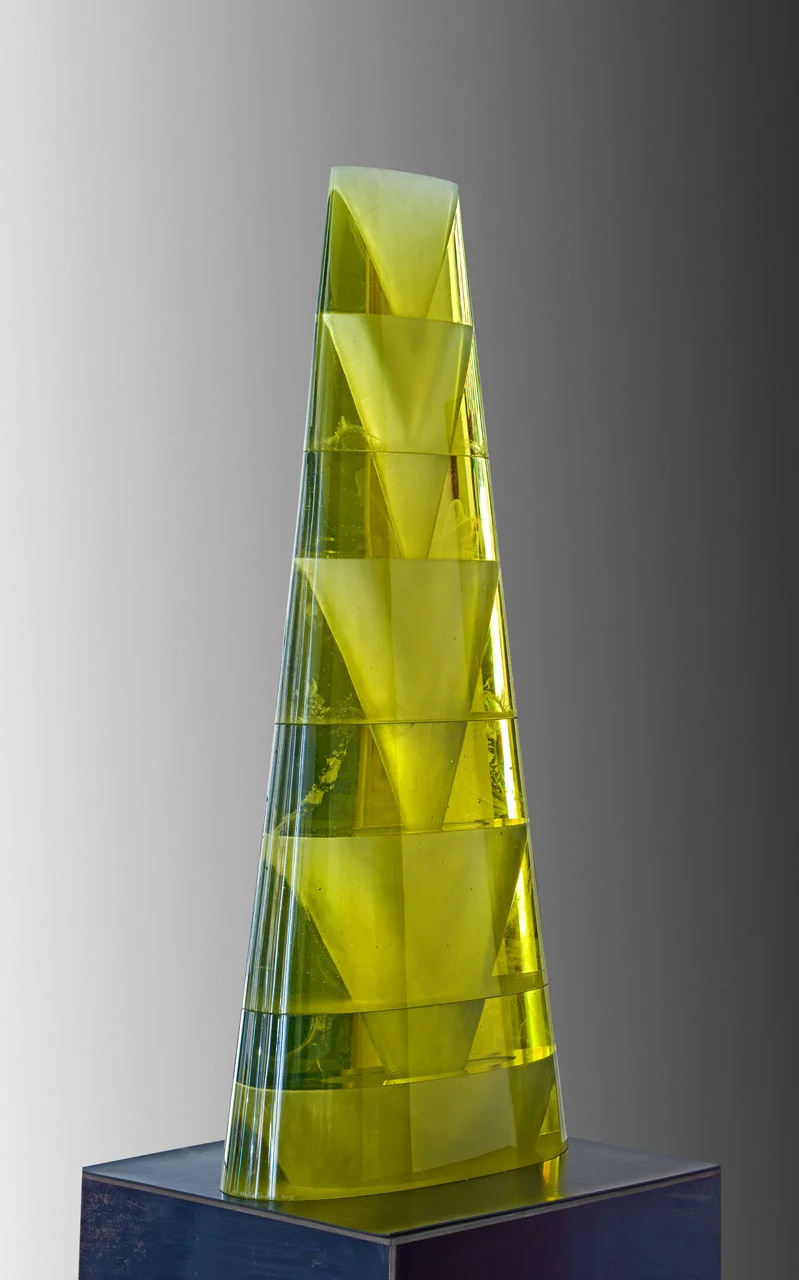VLADIMIR BACHORIK
Glass surrounds us everywhere. It is one of the most widely used materials invented by humans. We drink from glasses and we look through all kinds of windows; Windows of airplanes, cars and abodes. It seems that glass is substantial for life, and it is necessary and useful. However it can also be useless. Just for the shape of a glass object, simply for beauty. I am speaking of Vladimir Bachorik’s work, of his recent collection. Sometimes they resemble a vase that could easily be as spacious as Richard Serra’s elliptic compositions with inner spaces. Although, if that were the case, they could not be made of glass and this defines not only the scale but also certain qualities of Bachorik’s work. His work is transparent – up to certain extent or at particular places. Transparency enables us to permeate through the shape and to be brought to a standstill by another, inserted shape. Transparency seems to be similar if not identical to translucency. These adjectives are often confused, but each represents opposing movement. Transparency begins in the eye and continues on while translucency suggests shining from a source towards us. Both of these aspects connect in Bachorik’s work, which filters and multiplies thus becoming a fundamental idea of composition and expression. How many shapes are inserted in each other? Sometimes it is only a shifted segment cut that halts the light. Sometimes it is just a lightly recognizable diagonal. These relations, changing under various angles of light, hidden and outlined, are transforming the glass matter to such extent that it creates dominance over the outside form.














